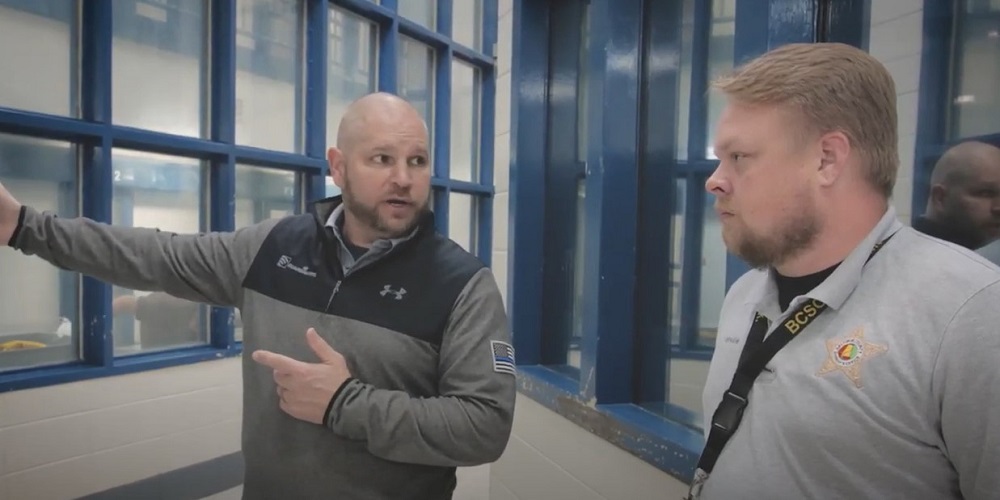How Staff Can Be Successfully Trained With GUARDIAN RFID Technology
Doesn't it always seem like once you’ve gotten the hang of a particular method, something new and improved comes along? You just bought an iPhone 11 and have recently learned how to navigate the different apps and widgets, and then the iPhone 13 launches with brand-new features. Well, that's how the cookie crumbles sometimes, right?
We all know one thing for certain: technology is ever-changing. But is it important to stay up to date with the latest trends? It depends on how you look at it. You probably don’t need to buy the new iPhone 13 if your iPhone 11 is working just fine. However, if you view it from a business perspective, you will need to keep up with the latest changes if you want to stay ahead of your competitors.
This blog highlights tips on how to get your team onboard and excited about utilizing modern technology (cough cough GUARDIAN RFID) in their daily tasks.
Before Implementation
Of course, there is a flipside to inviting a new and exciting tool to your facility. Although new software can help your operations, it can be nerve-racking to employees (especially some of our old-school folk).
Traditionally, there are only two things in corrections we hate: Change. And the way things are.
Steve MaynardStrategic Account Executive
Processing the change can be a perplexing task for some employees. The truth about those who push back is that they are most afraid of change. However, it doesn’t have to be that way. How the new technology is introduced to your team sets the stage for how they adapt to it. If you’ve had colleagues in the industry talk about how beneficial “the new technology” (or GUARDIAN RFID) is and how much easier and faster work can be completed, it’s clear that your team needs to adapt to it as well, right? It isn’t that easy.
Officers who may already feel burnt out from being underpaid, underappreciated, and struggling with mental health may not care, as the last thing they want to worry about is how to learn new technology. These are all valid reasons for not being enthusiastic about learning a new practice, but you will also hear less valid excuses, such as, “Well, I’m not tech-savvy.” Luckily, you don’t need to be; anyone who knows how to use a cell phone can easily adjust to using a SPARTAN.
One of the biggest mistakes companies make when implementing new programs, procedures, or technologies is asking already overloaded employees to magically find time in their day to add training. The result of this is predictable: employees will put off learning the new software for as long as they can in favor of doing the work they already have in front of them. Make training a priority by allocating the time and resources to make sure your training is comprehensive and well-received.
Cory Bleich | How to Train Employees on a New System or Technology
Training employees on the new GUARDIAN RFID software can begin with one simple step: working with your Project Manager to establish realistic deadlines, rollout methods, and a schedule for training purposes. Professional, experienced trainers (note that all GUARDIAN RFID trainers have several years of correctional experience) know that before the training sessions even begin, they may encounter some pushback from staff. That’s why GUARDIAN RFID staff are strategic about how they organize the training experience.
Scheduling both classroom and shadowing sessions is critical to the project’s success. While their overarching goal is to help staff understand how the technology benefits them and their work operations, they also ensure that every employee feels seen, heard, and supported during the transition. Think about it: if employees have a clearer understanding of what to expect, they’ll be more receptive. Thus, laying a solid foundation through scheduling and conversations between the administration and implementation team is a crucial initial step.

When You Implement
If you decide to implement GUARDIAN RFID in your facility, there are six stages of training:
1. Implementation Kickoff
2. Software + Network
3. Hardware Delivery
4. Setup & Test Equipment
5. Training & Go Live
6. Post-Implementation
You may be thinking, “Why are there so many pieces?” Well, it’s because our goal is to maximize your facility’s success every step of the way.
During the Implementation Kickoff, a GUARDIAN RFID Project Manager will connect with you and your team either over the phone or in person. You will discuss your software vendor, Wi-Fi needs, and any other information the Project Manager needs to determine how they can provide guidance. Of course, onboarding resources will be provided so all staff can understand the scope of use. Your vendor’s team will work with our team to conduct quality assurance testing and confirm that the interface is properly connected to the GUARDIAN RFID Cloud. You’ll receive your username and login credentials for the Cloud (you and your Project Manager will review everything together in detail so that all questions and concerns can be addressed in real-time).
Next is Pre-Training. This is a 1.5-hour meeting where potential end-users are invited to discuss policies, procedures, and any information that needs to be manually created or custom-modified to fit the needs of your team and facility. After Pre-Training comes On-Site Training. This consists of a series of 4-hour classes that provide detailed hands-on instruction on how to properly create and apply inmate wristbands or ID cards, use reports, and more.
The classroom will likely be divided into smaller groups so participants can evaluate the system firsthand. Having employees use the devices in real-time offers an opportunity to show them all the interactive tools they can use to lighten their workload. The trainer will walk through examples of specific use cases and scenarios to challenge the class on how they would respond to their device. Thus, this training is an engaging and collaborative experience for attendees.
We know that a “training session” can sound boring. More often than not, the trainer is aware of this too. Fortunately, our exceptional instructors know how to make the sessions interactive and engaging. Sitting through long hours of monotone lecturing and “death by PowerPoint” isn’t beneficial to anyone—except those who want to catch another extra hour of sleep. Trainers aim to hold their sessions in a positive and uplifting environment that helps improve staff attitudes as they enter the training. If your facility uses a conference room, it allows them to work in a space they are already familiar with and comfortable in. Staff should come prepared with questions or concerns, as this is truly your system, and we want them to take ownership.

Finalizing the Implementation
Last but not least is the Go-Live phase, which is scheduled within hours of the last training class. The advantage of not pausing between training and Go-Live is that there’s little to no loss of information sharing. In fact, many staff members will apply their newfound knowledge within hours of receiving it, and having the trainers on hand during this transition helps smooth out any inevitable rough edges.
During this phase, our training team will be on-site to support your Go-Live efforts. We’ll be with you during the first few days of use. If you have a question, we’re right next to you or just a few pods away. Go-Live shadowing is also a great way to further optimize your use of GUARDIAN RFID, and our team will provide recommendations based on what they observe.
Following implementation and Go-Live, your Customer Success leader will introduce themselves and ask how training and Go-Live were executed. Your Customer Success leader will follow up every few weeks during the first 90 days. After six months, they’ll check in quarterly.
GUARDIAN RFID’s goal is to ensure your utmost satisfaction. Our mission is to get every Warrior protecting America’s Thin Gray Line home safely after every shift. To care about officers’ lives, we need to focus on the operations in their facilities. GUARDIAN RFID is here to continuously provide the technology that supports the care, custody, and control of correctional officers. Consider collaborating with us in our mission to get your team home safely.
Resources
Bleich, Cory (2019). How to Train Employees on a New System or Technology: 5 Tips
Retrieved from: https://www.edgepointlearning.com/blog/how-to-train-employees-on-new-system/

